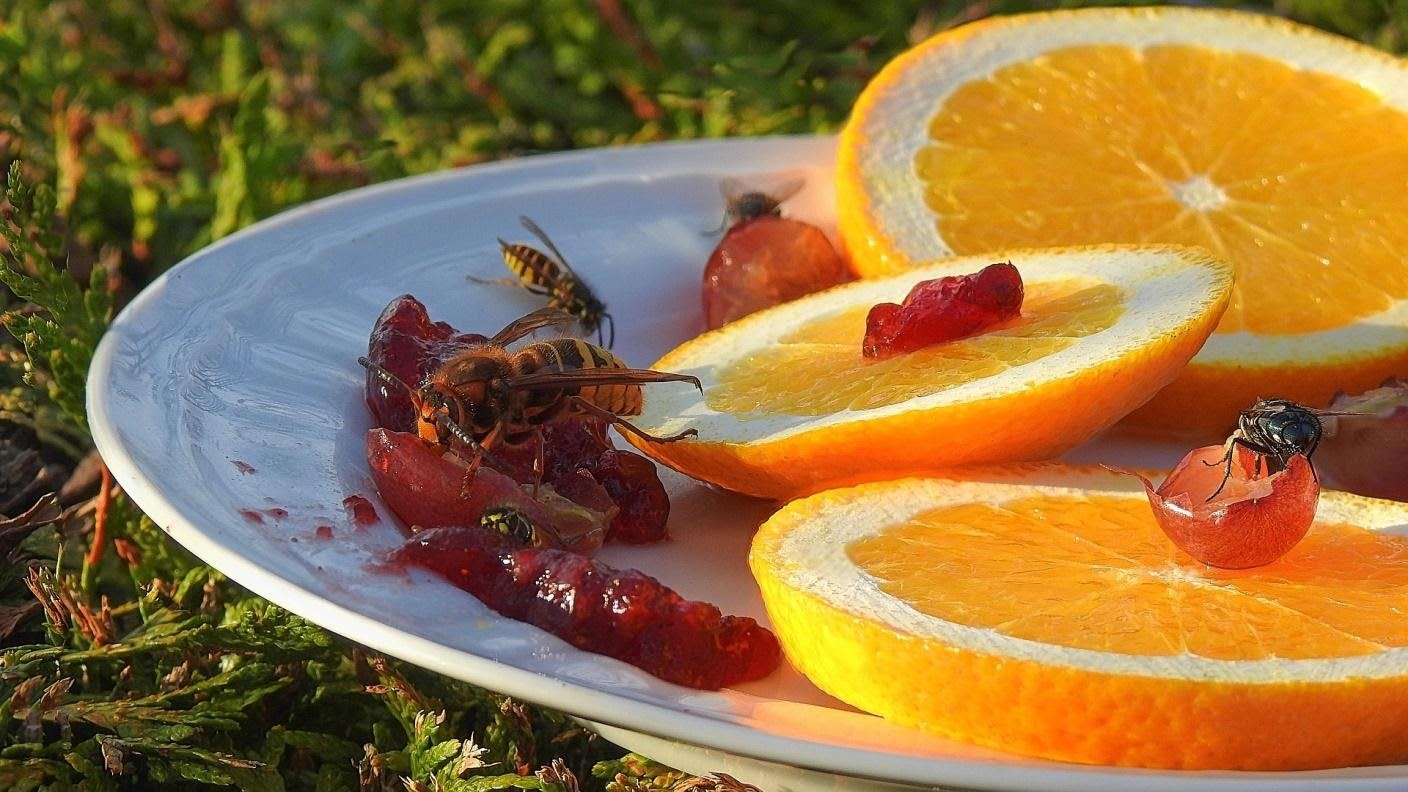
What Should You Do If a Wasp Stings You?
Stinging insects, such as bees and wasps, can be particularly bothersome in the warmer months when they’re most active. Unfortunately, that also coincides with the time of year when we also spend the most time outside. Wasps tend to be more aggressive and, due to their anatomy which we will discuss further down in this article, are likely to sting you many more times than a bee would and many of us are all too familiar with how painful a wasp sting can be and how it can ruin a perfectly good picnic or barbeque.
Since a wasp’s stinger is used for self-defense, it contains venom that’s transmitted to people. If you happen to be allergic to this venom, it can lead to a serious reaction that needs immediate medical attention. In this article, we will discuss the difference between bee stings and wasp stings, the symptoms of a wasp sting, treatment, and prevention measures.
Wasps vs. Bees
When you’re out on a picnic, barbecue, or simply dining alfresco at your favorite restaurant to make the most out of a warm summer day, you’re more likely to encounter wasps than bees. That’s because their food requirements mimic ours. Honeybees and bumblebees are herbivores that use their long tongues to get nectar from flowers. Wasps, on the other hand, are omnivores with short tongues. The nectar is less accessible to them, and they also feed on protein. They like to eat other insects but also your lunch. Since they’re sensitive to smell, if you’re wearing floral perfume or you’ve just had a burger (or even better, you’re still in the process of eating one), they’ll be buzzing
around you.

Also, a wasp’s stinger is different than that of a bee. To be more precise, than that of a honey bee – the most common species. A honey bee’s stinger is barbed at the end, which means that if they sting, the stinger will get stuck under the skin so the bee will die. Wasps and other species of bees have smooth stingers, like a needle, which means they can sting you over and over again.
Symptoms and Treatment
Although wasp stings are painful, most people without a sting allergy will only have minor symptoms that include a sensation of sharp pain and burning in the area where they got stung, as well as some redness, swelling, and itching.
You’ll see a raised welt with a tiny white mark where the stinger punctured your skin. The pain and swelling will typically recede after a few hours.
In case of mild to moderate reactions such as these, there are many home remedies for wasp sting you can try. You’ll want to first wash the area with water and soap, which will remove some of the venom. To reduce the swelling, you can apply cold packs, as for the pain, you can take over the counter medicines like ibuprofen. If the itchiness is too bothersome, you can also apply calamine lotion or hydrocortisone cream.
Some people develop more pronounced symptoms, which are called large local reactions. It means they may be allergic to wasp venom, but not so much that they experience life-threatening reactions like anaphylactic shock.
Large local reactions involve more extreme redness and swelling, which increases in the two or three days after being stung. They may also experience nausea or vomiting. These symptoms take longer to subside than with mild to moderate reactions – approximately a week.
If you have a large local reaction, you should let your doctor know that you got stung by a wasp, and they will prescribe you antihistamines to reduce your symptoms. Keep in mind that this doesn’t necessarily mean that you’ll react to wasp stings the same way in the future. It can happen just once, although, for a smaller number of people, it can be how their bodies usually respond to wasp venom.
The most severe allergic reaction to wasp venom is the anaphylaxis. The body goes into shock soon after getting stung, and you’ll need to get immediate medical care.
Symptoms include:
- Severe swelling of the face and throat
- Breathing difficulties
- Hives and itchiness in areas that were not stung
- Drop in blood pressure
- Weak or racing pulse
- Lightheadedness and dizziness
- Stomach cramps
- Nausea and/or vomiting
- Loss of consciousness
Anaphylactic shock is dangerous and considered a medical emergency. You will need to receive epinephrine with an EpiPen as soon as possible and go to a hospital for further medical care.
How to Avoid Wasp Stings
It may seem like wasps sting you for no reason or simply because they’re vindictive creatures, but they almost always do it as a defense mechanism. With that being said, they may not always interpret the threat correctly. This is why, if a wasp approaches you, it’s not a good idea to flap your arms about in an effort to scare it away. It’s more likely to sting you. What you should do is avoid any sudden movements and slowly walk away.

If one wasp stings you, it will release a chemical that the other wasps can detect, and they’ll swarm to the scene to help deal with the threat – which in this case is you.
The most important thing you can do to prevent wasp stings is to stay away from their nests. Wasp nests usually look like large, papery upside-down nests. However, the nests are not always visible. They can set up shop pretty much anywhere – in trees, logs, stumps, or in the ground. So how can you tell if you’re “in their territory”? Well, if you see wasps flying around casually, from one place to another, they’re just looking for food. When you see them flying in a straight line, and they look very determined, they’re probably near home base, and you should go in the opposite direction.
If you’re at a picnic or barbeque, make sure you clear away any garbage and don’t leave any food you’re not eating uncovered. You should also cover your drinks because they get drawn to anything sugary. In fact, it’s better to drink from clear glasses. They can also crawl inside soda cans, and since you can’t see them, you might take a drink, and get stung inside the mouth or throat, which is dangerous and requires emergency medical care.




